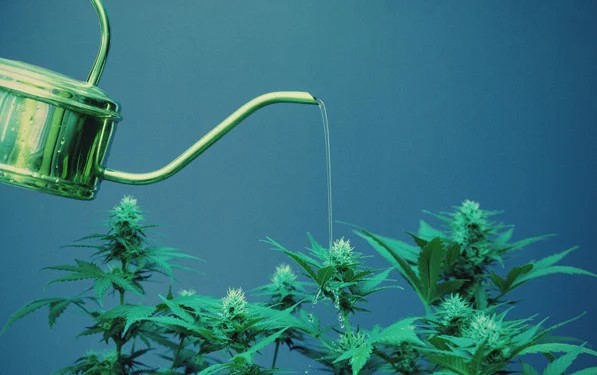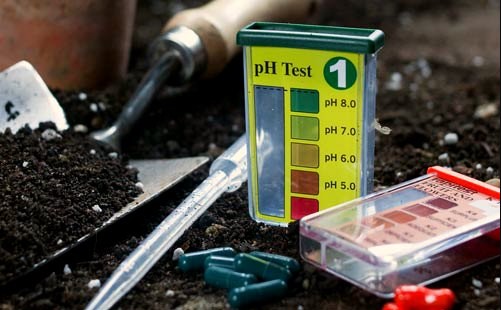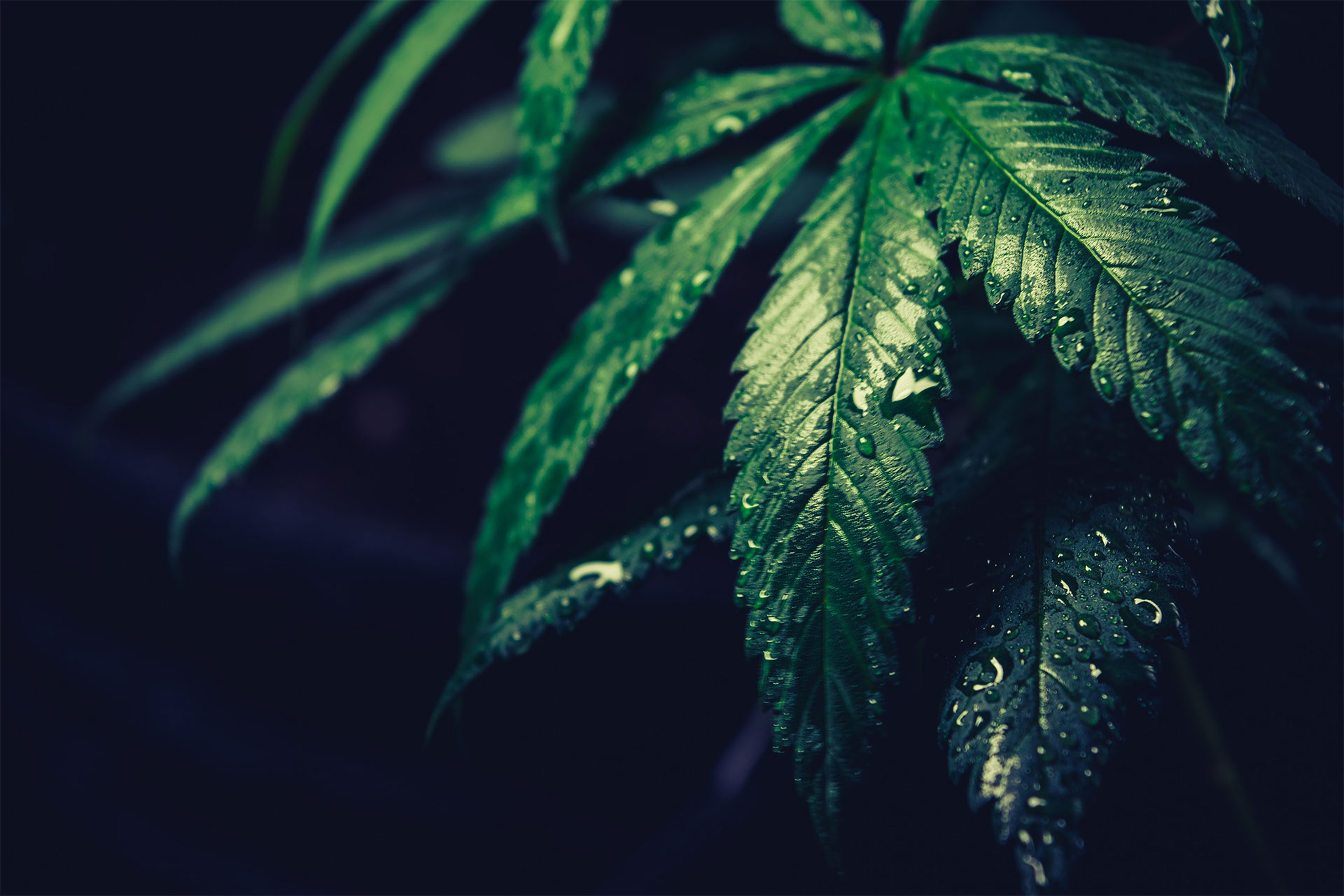Watering cannabis plants is a thing in itself. Adequate water intake is vital for any plant and vital for it to thrive. Through rain or artificial irrigation, the water gets into the soil, dissolves the nutrients that seep into the earth and are thus made accessible to the roots. Without water, there’s no life!
The plants need water in order to get to the nutrients via the root system. The water requirement of the plant depends mostly on its stage of development. It also depends on the environmental conditions and also the water retention capacity of the substrate. All of these factors determine, among other things, the further development of your weed plant.
Water cannabis plants, how much and when?
If your substrate does not store enough water, your climate is too hot and the plant is in the middle of the flowering phase, it is advisable to water more often. If the temperatures are moderate, your plants are still growing, and the substrate has a high water retention capacity, then you will need less water.
Over time you will get a feel for when and, most importantly, with how much water to water your cannabis plants. There are simply no guidelines. It is a good indication of when at least the first two centimetres of the substrate have dried.
The weight of the pots can also provide information about the water requirement and whether the cannabis plants have to be watered by lifting them up. Mostly too much water is used, especially in the growth phase, when the roots are very sensitive to waterlogging.
It is also different from the quality of the water. There are a few factors to consider here.

What quality/composition must water have for watering weed plants?
Knowing the basic values of the water to use when watering cannabis plants is of great value. Because these values show how well the plant can absorb the nutrients and how much of it is available to it. We are talking about the pH and EC values, as well as the water hardness. The temperature of the water also has an influence on the values.
Hard vs. Soft water
The quality of the water differs in mineral content. With a high concentration of dissolved minerals, one speaks of hard water and vice versa of soft water. Measurements are made with a TDS (Total Dissolved Solids) or conductivity measuring device, which indicates the total amount of dissolved minerals/salts in ppm (parts per million), which corresponds to the amount in milligrams per litre (mg / l).
The value of hard water is 320 – 530 ppm, which means that 320 – 530 mg of dissolved salts are contained per litre of water. Values of 70 – 140 mg / L are referred to as soft water. The water hardness is also often given in degrees of hardness (° TH). The values for hard water are 12 – 30 ° TH (a lot of Ca and Mg) and for soft water 0 – 7.8 ° TH (little Ca and Mg), values in between are referred to as medium-hard water.
Hard water usually contains a lot of dissolved calcium (Ca) and magnesium (Mg), which are important nutrients for the plant. However, if you live in a region with very soft water and the associated low proportion of these nutrients, your plants will likely experience deficiency symptoms.
You should prevent this by adding dolomite lime to the earth and using a special Ca-Mg fertilizer. Less hard water with values of 140 – 210 ppm is ideal for growing weed plants. The water hardness largely corresponds to the mineral content but is also influenced by the temperature and pH of the water.
The EC value
The electrical conductivity (EC) indicates the salt concentration of the mineral salt ions dissolved in the water. The measured value is given in Siemens per centimetre (S / cm) or millisiemens per centimetre (mS/cm). The more ions a solution contains, the greater the conductivity. 1 mS/cm corresponds to the EC value of 1 and is equal to 640 ppm.
However, the value does not indicate which mineral salts are contained and whether these are important as nutritional salts for your plant. Tap water, which contains a lot of sodium and chloride, for example, has no nutritional value for your plants. Tap water is more likely to be harmful to soil life.
Rainwater, on the other hand, is ideal if you want to water cannabis plants.

Watering cannabis plants: EC Pen + temperature
Water with an EC value of a maximum of 0.5 is ideal for your weed plants. If the value is higher, we recommend filtering the water. If you live in a region where the salt content is very high, you can use reverse osmosis water.
In this process, the water is pressed through a semi-permeable membrane with the help of a pump and cleaned of chlorine, organic materials, solids, pesticides and herbicides as well as bacteria and viruses, whereby the pH value is also neutralized.
Measure the pH
The abbreviation pH stands for pondus hydrogen or potential of hydrogen and is translated as the weight or power of hydrogen (H). The pH value indicates the concentration of hydrogen ions in the water or medium and is the measure of the acid-base balance.
If the number of hydrogen ions is high, the pH value is low and the liquid or the soil is acidic; if the number of H ions is low, the pH value is high and the liquid or soil is basic or alkaline.
Watering cannabis plants: Combination meter: pH value
The pH value is measured on a scale from 0 to 14, with 7 being neutral. Any value below 7 represents an acidic solution and above it an alkaline solution. Most of the nutrients that are vital for plants become soluble in the acidic range have values of 5.8 to 6.5 for soil and 5.6 to 6.3 for hydroponics.
The values should be checked regularly, as fluctuations have a negative effect on plant growth. The pH is also influenced by the plant and the microorganisms in the medium. The addition of fertilizers also changes the pH value. It is advisable to check and regulate the value every time you add water.
There are special measuring devices and chemicals known as pH controllers for this purpose. Common household chemicals such as potassium hydrogen carbonate or wood ash can also be used to neutralize acidic water. Citric acid, kombucha tea, or vinegar can help if the water is too alkaline.
pH regulator in powder form
You can easily find out what the composition of the tap water is in your region by looking for the current drinking water values. Every local water company publishes an annual water quality report.
Note that with the optimal values, the plant’s nutrient absorption can be maximized, resulting in a healthier and stronger appearance. And who doesn’t want the most beautiful plants in the garden!
Top Tips on watering Cannabis plants
- Water should have a temperature of 18 ° – 24 ° C
- Water in the first hour after the start of the day
- Foliar Feed before the start of the day or after sunset
- The earth must NEVER be permanently damp
- Do not water again until the lowest leaves of the plant are clearly leaning towards the ground
- Remember the weight of the pots before watering, then you will quickly know when it is time again …
- Give the water in several servings, not all at once. Dry earth must recieve water slowly so that it can absorb it well.
- Do not place your pots directly on the floor. Put 2-3 blocks underneath, so that there is about 1-2cm space. So the roots get more air and are not in the water (root rot)
- Rainwater is optimal because of its acidic nature
- Water with a high number of alkaline minerals such as calcium, magnesium and potassium has a high alkalinity and thus a high ability to buffer acids
- If necessary, you add Cal-Mag first (measure the EC value!), Then the fertilizer and finally the pH value is adjusted


My partner and I abѕolutеly love your blog and
find many of your posts to be exactly what I’m looking for.